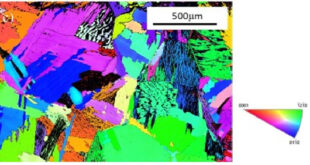International Journal of Fracture, July 2013, Volume 182, Issue 1, pp 67-91.
M. Steigemann, B. Schramm.
Department of Mathematics and Natural Sciences, University of Kassel, Kassel, Germany and
Institute of Applied Mechanics, University of Paderborn, Paderborn, Germany.
Abstract
The numerical simulation of quasi-static crack propagation is closely related to the computation of characteristics such as stress intensity factors or energy release rates. In this work, ideas are proposed, how such quantities can be calculated precisely in linear elastic, anisotropic and inhomogeneous plane structures. Stress intensity factors and other local characteristics can be evaluated in terms of functionals depending on solutions of certain elasticity problems. The approach used here to calculate these functional values precisely with Galerkin finite elements is a dual-weighted-residual method for adaptive mesh refinement and a posteriori error control. Especially in structures under mixed-mode loadings contact of crack faces can occur. A numerical realization of mutual non-penetration conditions of inequality type for the crack faces and the effect of such constraints on stress intensity factors is shown. Numerical results are presented for anisotropic and functionally graded materials.
Additional Information:
In this work we discuss methods for the numerical calculation of quantities such as stress intensity factors (SIFs) and other characteristics relevant to the simulation of quasi-static crack propagation in linear elastic materials for 2-dimensional problems. While efficiency of numerical methods is always an aspect, of more important relevance in the field of fracture mechanics is the precision and accuracy of computed values. Quantities such as SIFs depend highly on the geometry, the applied loads and the material properties of the structure under consideration and in order to get reasonable results it is necessary to calculate the error of numerically computed values. The intention of this work is twofold. The first aspect is to present formulas, how quantities such as SIFs can be evaluated in anisotropic and also inhomogeneous materials. We focus on integral representations involving singular eigenfunctions and discuss, how the classical approach from Bueckner and Maz’ya & Plamenevsky can be generalized to inhomogeneous materials. The second aspect is the numerical precise calculation of such quantities. We use the dual-weighted-residual method (DWR) to present an idea how to calculate accurate error bounds for SIFs and other integral values as well as an applicable strategy to improve precision. The DWR method provides the numerical error of functional values in terms of cell-wise residuals of the displacement field and the solution of a dual problem, here called weights, which can be used for efficient adaptive mesh refinement in the context of finite elements. The precise computation of SIFs includes another pure physical aspect. Especially in anisotropic and non-symmetric or Mixed-Mode scenarios the upper and lower lips of the crack can penetrate each other, which is physically not possible. It is necessary to impose (mutual) non-penetration conditions. We realize non-penetration conditions of inequality type numerically by solving a saddle point problem with a Uzawa iteration scheme and show the influence on SIFs.
Acknowledgements: This work is based on investigations of the collaborative research center SFB/TR TRR 30, which is kindly supported by the DFG.
 Advances in Engineering Advances in Engineering features breaking research judged by Advances in Engineering advisory team to be of key importance in the Engineering field. Papers are selected from over 10,000 published each week from most peer reviewed journals.
Advances in Engineering Advances in Engineering features breaking research judged by Advances in Engineering advisory team to be of key importance in the Engineering field. Papers are selected from over 10,000 published each week from most peer reviewed journals.

